Abstract
Basal pressure and relaxation of the lower oesophageal sphincter (LOS) as well as amplitude, duration and propagation velocity of peristaltic waves in the distal third of oesophagus were measured in 15 healthy adults (nine men and six women). A highly standardised technique was used employing manometric equipment including a low-compliance pneumohydraulic infusion system and a triple lumen recording catheter. After establishment of baseline manometry values the catheter was positioned with its distal orifice in the lower oesophageal sphincter. In 10 subjects 0.2 mg/kg body weight of morphine sulphate was then injected subcutaneously. In five others equal volume of saline was given. The manometric data were analysed blindly. Repeated manometric evaluations were carried out 15, 30, 45, 60, and 75 minutes after the injection. Morphine increased slightly LOS-pressure and significantly (p less than 0.001) decreased LOS-relaxation, the maximal effect occurring 30 minutes after the injection. Amplitude of peristaltic waves increased slightly but insignificantly, whereas propagation velocity and duration were uninfluenced. The results of this study suggest that pharmacologic doses of morphine influence normal function of the LOS and possibly the distal oesophagus. The role of endogenous opiates in this respect, however, awaits further studies. It is suggested that abnormalities in opioid neurotransmission may explain some of the non-specific oesophageal motility disorders.
Full text
PDF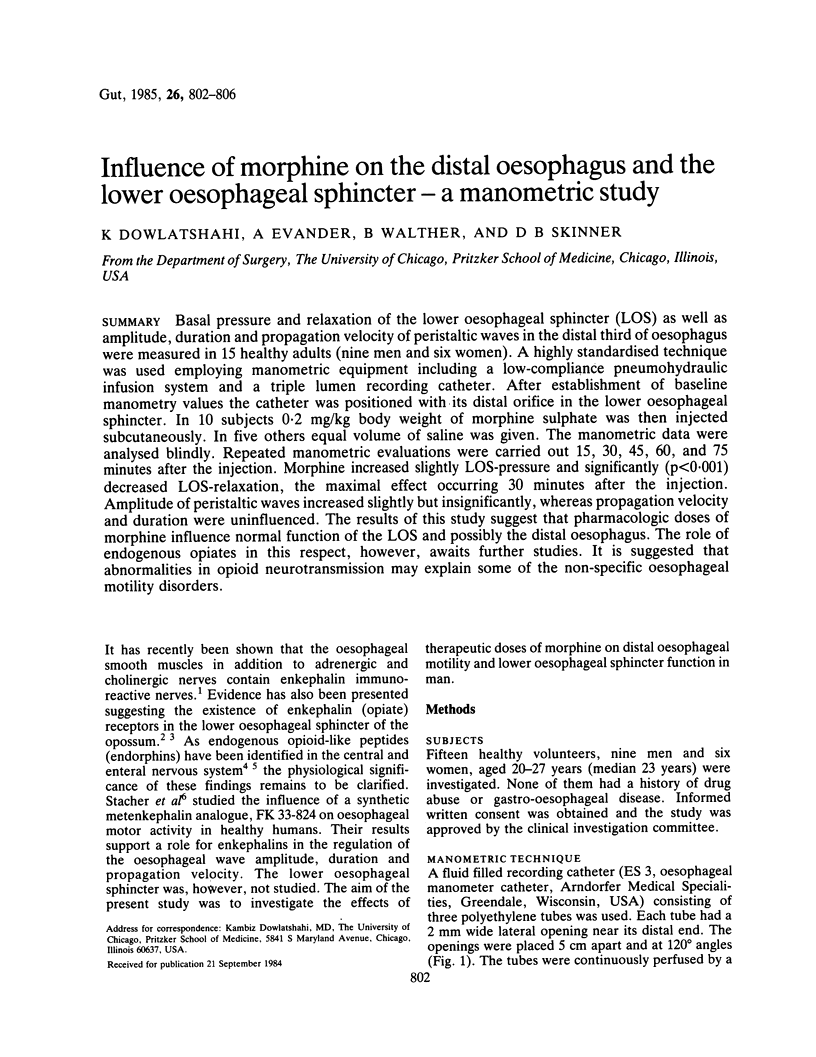
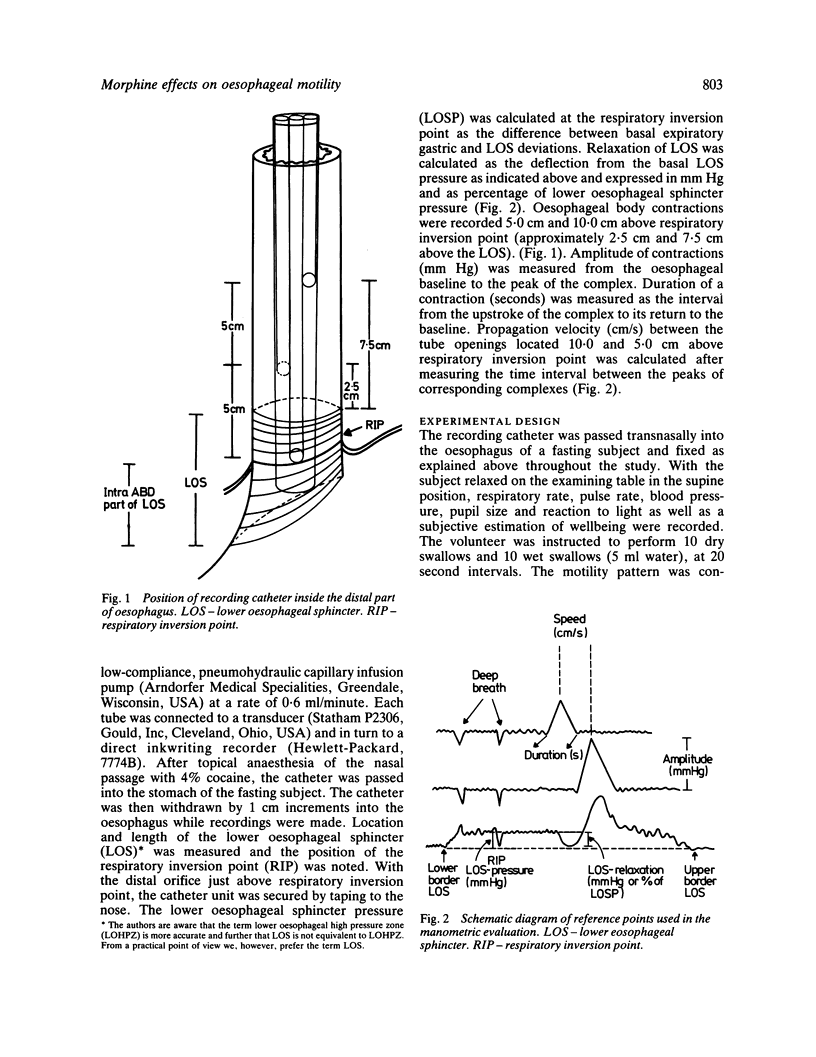
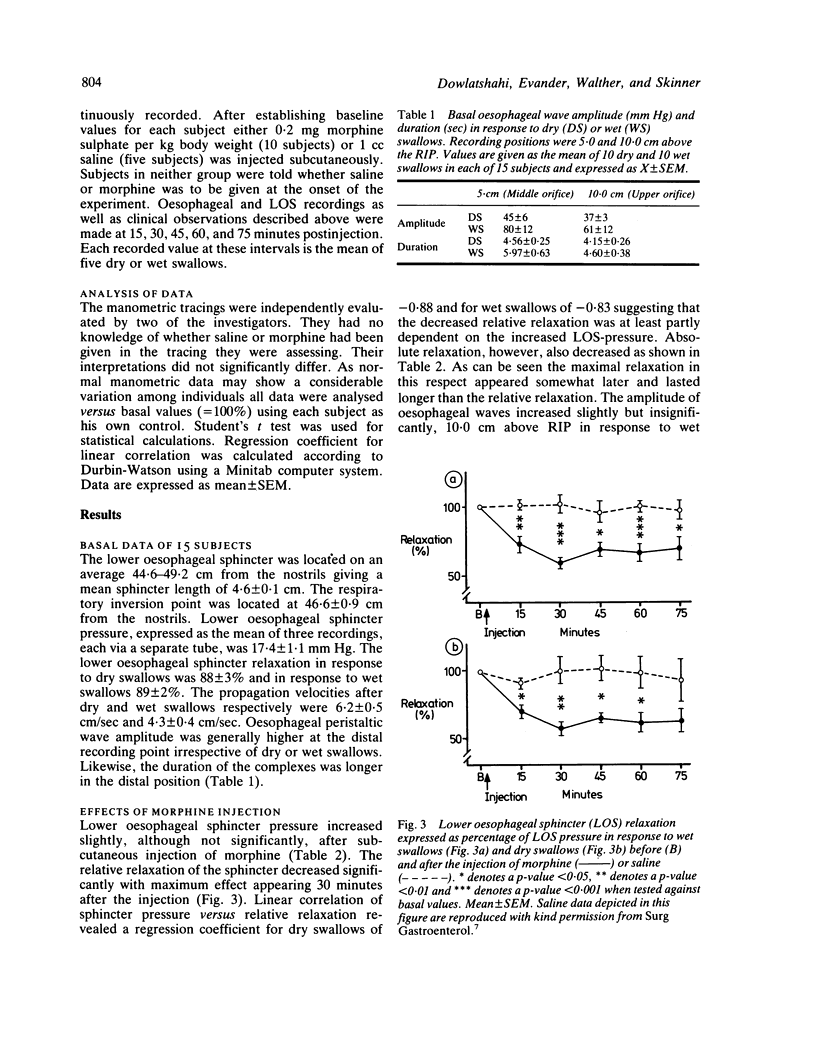
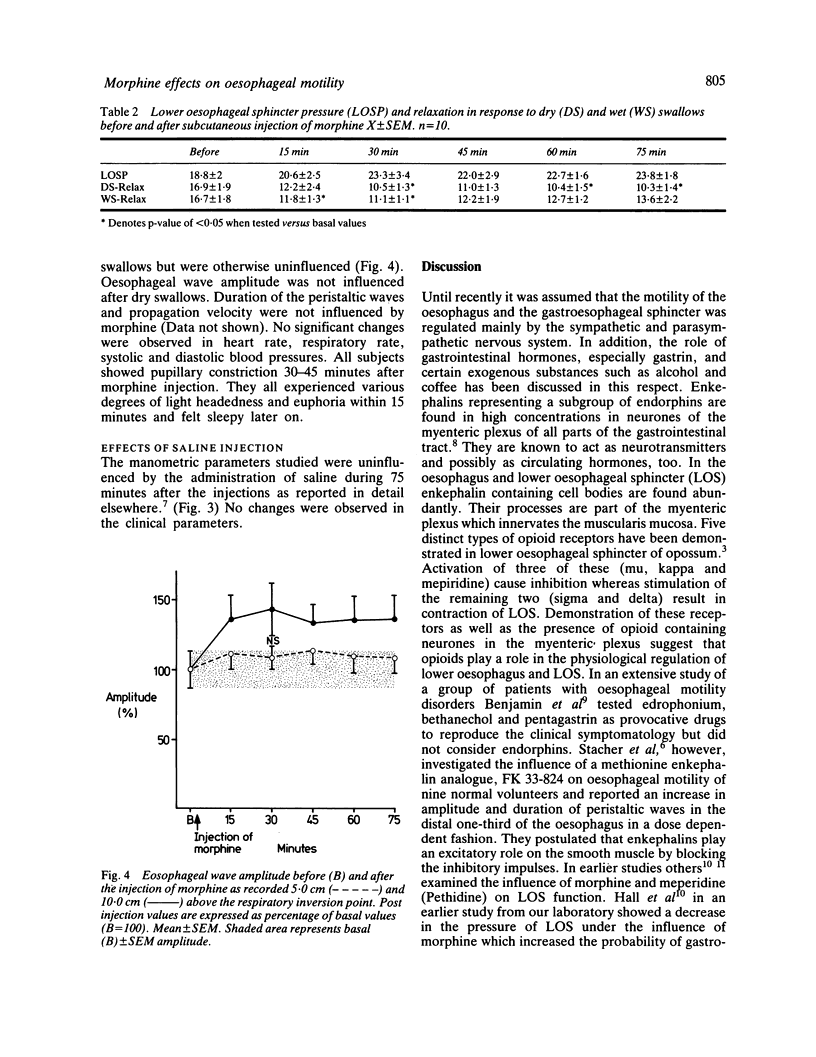
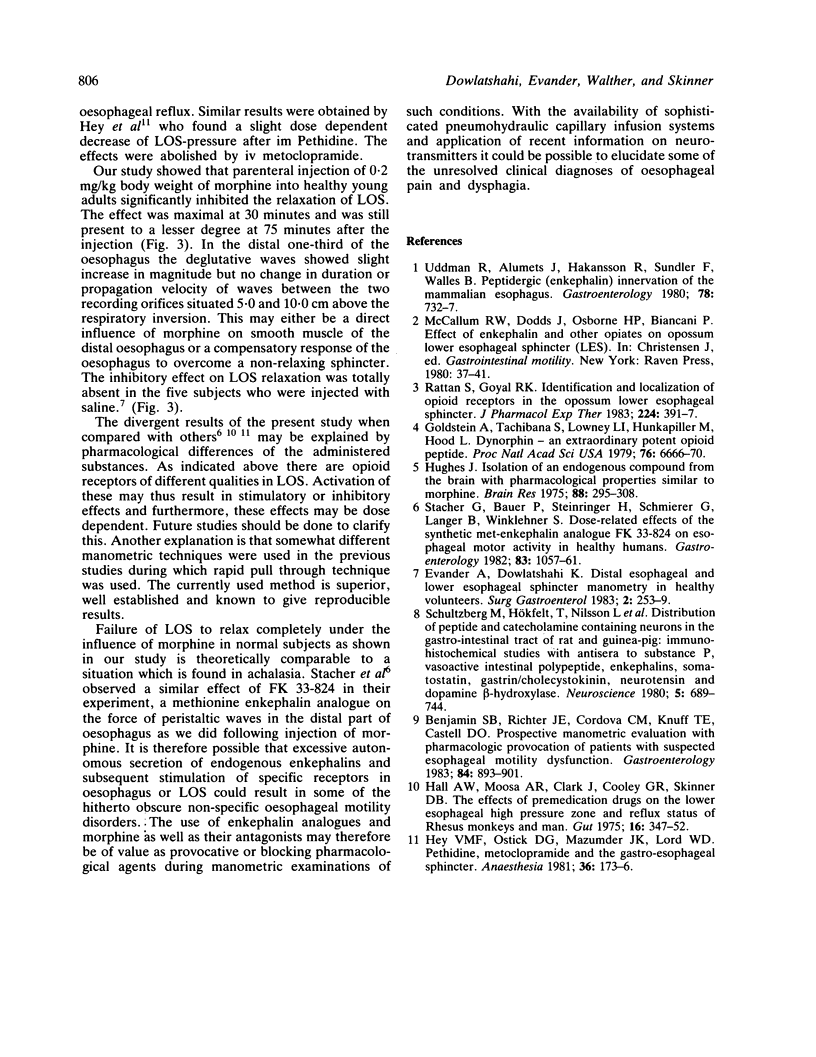
Selected References
These references are in PubMed. This may not be the complete list of references from this article.
- Benjamin S. B., Richter J. E., Cordova C. M., Knuff T. E., Castell D. O. Prospective manometric evaluation with pharmacologic provocation of patients with suspected esophageal motility dysfunction. Gastroenterology. 1983 May;84(5 Pt 1):893–901. [PubMed] [Google Scholar]
- Goldstein A., Tachibana S., Lowney L. I., Hunkapiller M., Hood L. Dynorphin-(1-13), an extraordinarily potent opioid peptide. Proc Natl Acad Sci U S A. 1979 Dec;76(12):6666–6670. doi: 10.1073/pnas.76.12.6666. [DOI] [PMC free article] [PubMed] [Google Scholar]
- Hall A. W., Moossa A. R., Clark J., Cooley G. R., Skinner D. B. The effects of premedication drugs on the lower oesophageal high pressure zone and reflux status of rhesus monkeys and man. Gut. 1975 May;16(5):347–352. doi: 10.1136/gut.16.5.347. [DOI] [PMC free article] [PubMed] [Google Scholar]
- Hey V. M., Ostick D. G., Mazumder J. K., Lord W. D. Pethidine, metoclopramide and the gastro-oesophageal sphincter. A study in healthy volunteers. Anaesthesia. 1981 Feb;36(2):173–176. doi: 10.1111/j.1365-2044.1981.tb08719.x. [DOI] [PubMed] [Google Scholar]
- Hughes J. Isolation of an endogenous compound from the brain with pharmacological properties similar to morphine. Brain Res. 1975 May 2;88(2):295–308. doi: 10.1016/0006-8993(75)90391-1. [DOI] [PubMed] [Google Scholar]
- Rattan S., Goyal R. K. Identification and localization of opioid receptors in the opossum lower esophageal sphincter. J Pharmacol Exp Ther. 1983 Feb;224(2):391–397. [PubMed] [Google Scholar]
- Schultzberg M., Hökfelt T., Nilsson G., Terenius L., Rehfeld J. F., Brown M., Elde R., Goldstein M., Said S. Distribution of peptide- and catecholamine-containing neurons in the gastro-intestinal tract of rat and guinea-pig: immunohistochemical studies with antisera to substance P, vasoactive intestinal polypeptide, enkephalins, somatostatin, gastrin/cholecystokinin, neurotensin and dopamine beta-hydroxylase. Neuroscience. 1980;5(4):689–744. doi: 10.1016/0306-4522(80)90166-9. [DOI] [PubMed] [Google Scholar]
- Stacher G., Bauer P., Steinringer H., Schmierer G., Langer B., Winklehner S. Dose-related effects of the synthetic met-enkephalin analogue FK 33-824 on esophageal motor activity in healthy humans. Gastroenterology. 1982 Nov;83(5):1057–1061. [PubMed] [Google Scholar]
- Uddman R., Alumets J., Håkanson R., Sundler F., Walles B. Peptidergic (enkephalin) innervation of the mammalian esophagus. Gastroenterology. 1980 Apr;78(4):732–737. [PubMed] [Google Scholar]


